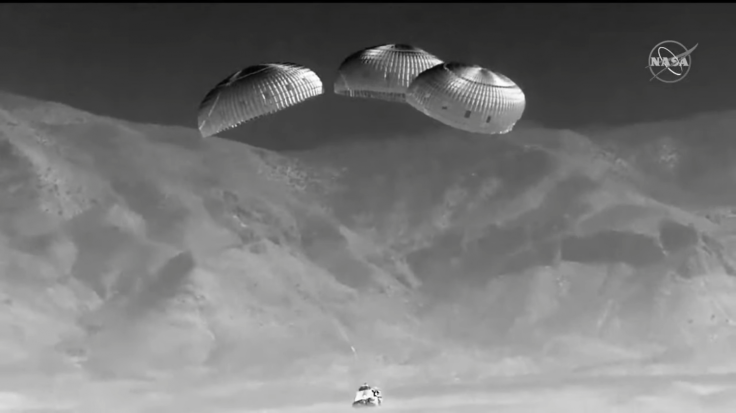Boeing's Starliner spacecraft is now closer to its first crewed flight test.
The CST-100 Starliner has successfully landed in the New Mexico desert, marking the end of its first successful uncrewed mission and its first step towards manned test flights and missions to space, per CNBC.

The spacecraft was previously launched by NASA on a United Launch Alliance Atlas V rocket on May 19 after many unsuccessful attempts to do so for two and a half years.
Boeing Starliner Landing Details and Implications
Boeing's Starliner spacecraft was undocked from the International Space Station (ISS) earlier at 2:36 p.m. EDT on May 25, after completing about five days attached to the microgravity laboratory as part of its Orbital Flight Test-2 unmanned test flight (OFT-2), according to NASA.
The spacecraft would later land in the New Mexico Desert, specifically at White Sands Space Harbor in New Mexico, with it touching down on Earth at 6:49 p.m. on the same day, NASA reported.
The successful landing of the Starliner spacecraft marks a critical development milestone for Boeing's development of Starliner; its success takes the spacecraft one step closer to a future crewed test flight, and subsequent official crewed mission to the ISS.
The spacecraft has suffered numerous obstacles to reaching its successful launch, with its first launch being unsuccessful due to its internal clock being unsynced with the mission plan, causing the spacecraft to not engage its engines at the correct time automatically for it to go to the ISS, per QZ.com.
The Verge mentioned that because Starliner's engines fired at the wrong time, it was unable to reach the correct orbit to rendezvous with the ISS.
Starliner was also cut off from ground communication at that time due to nearby satellites, causing it to miss a backup transmission of the command to fire its engines.
Boeing tried launching Starliner again but canceled it following a discovery that more than a dozen propellant valves were sticking and not opening properly, per a separate report from The Verge.
What's Next for Boeing and Starliner?
Despite the success of Starliner's OFT-2 mission, there is still plenty of work to be done to the spacecraft. Boeing noted that two of Starliner's 12 thrusters failed during its launch due to drops in chamber pressure causing the thrusters to cut off early.
This complication caused the spacecraft's flight control system to engage a backup thruster, which was fortunately done in time to reach the ISS.
Boeing also found other bugs during Starliner's docking caused by low chamber pressure. Despite this, Starliner had redundancies that helped the spacecraft's docking process go smoothly, as NASA Commercial Crew Program manager Steve Stich said.
With the spacecraft back on Earth, Boeing will most probably study the previously mentioned failures to come up with ways to correct them and determine if Starliner is ready for its first crewed flight test or CFT.









